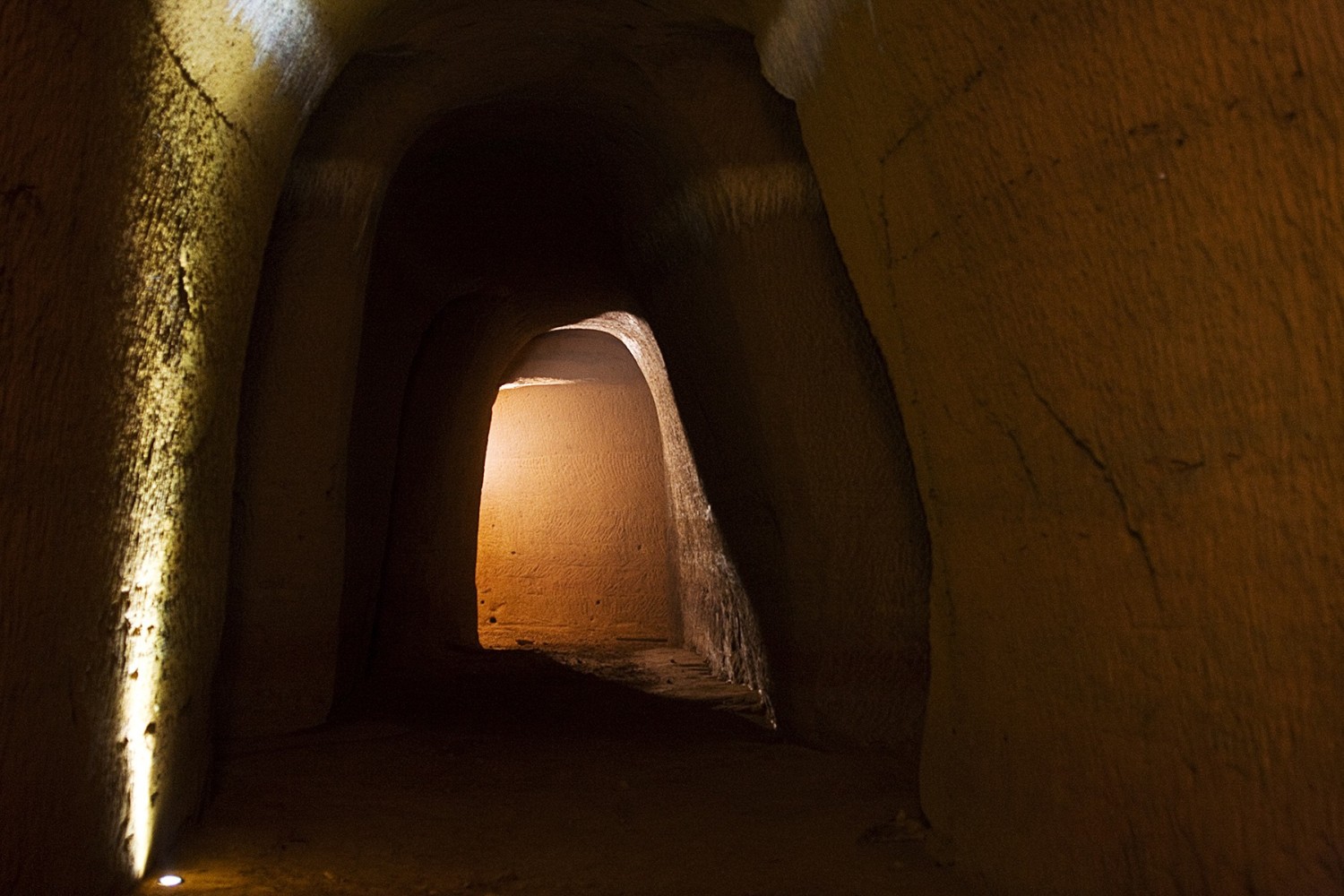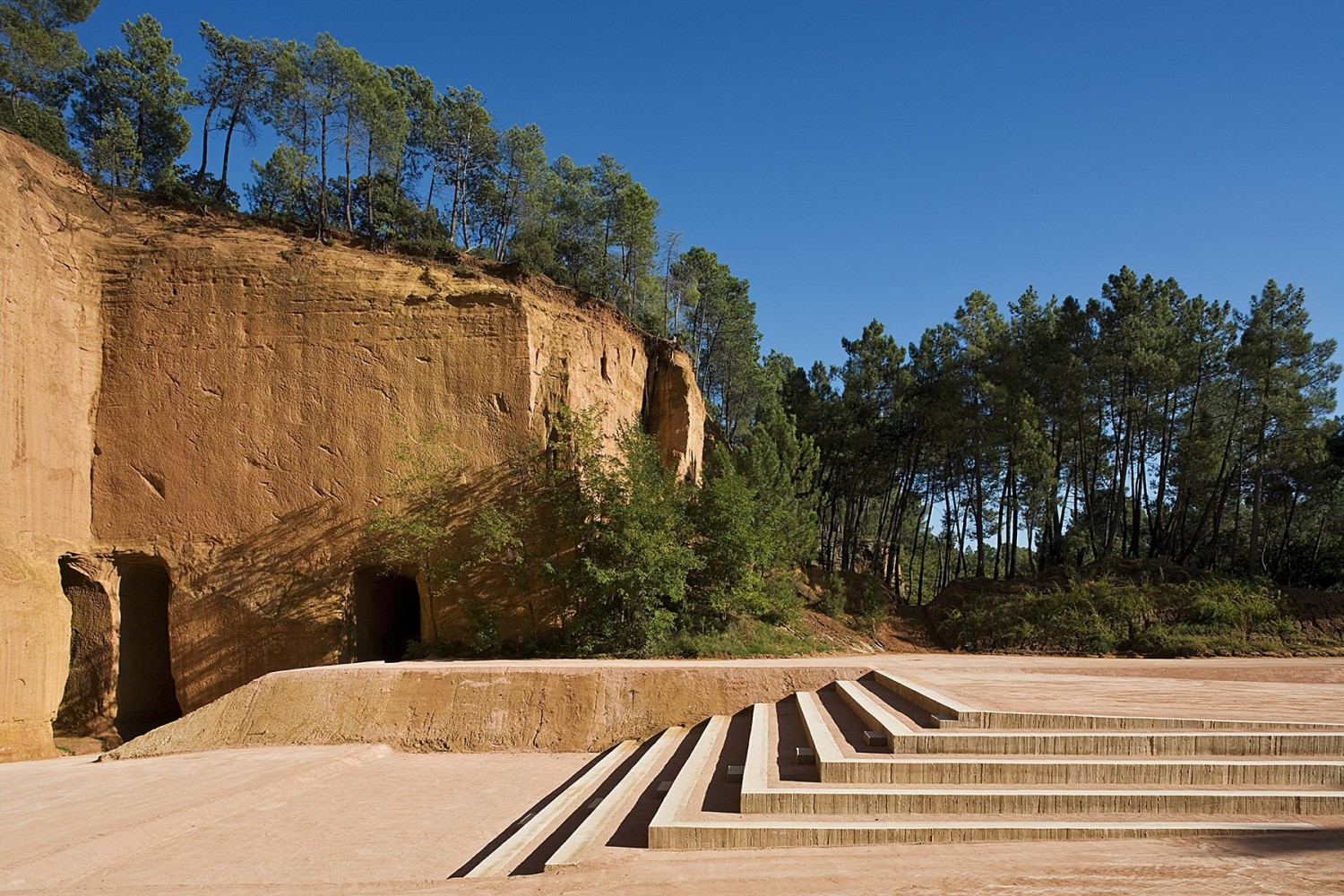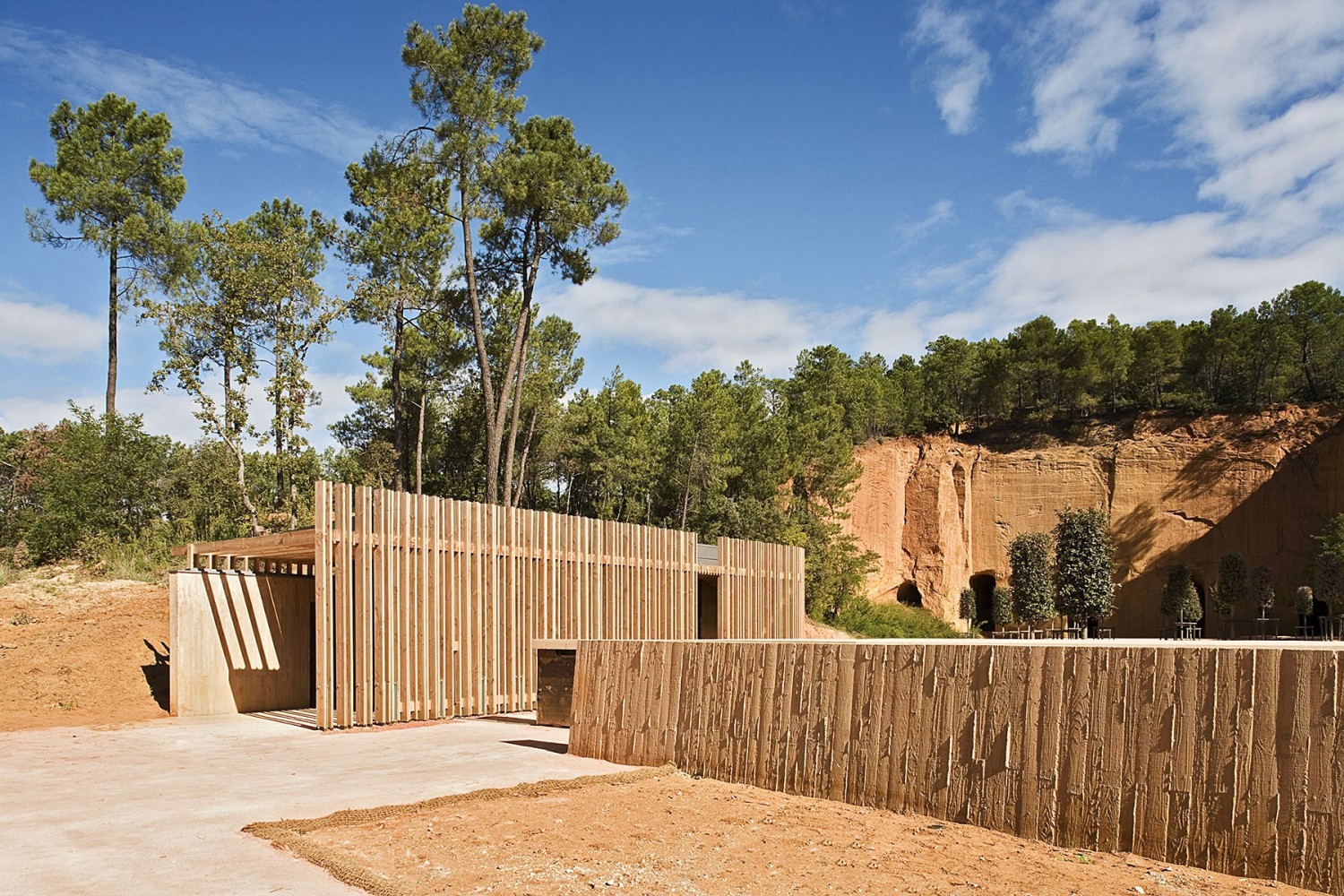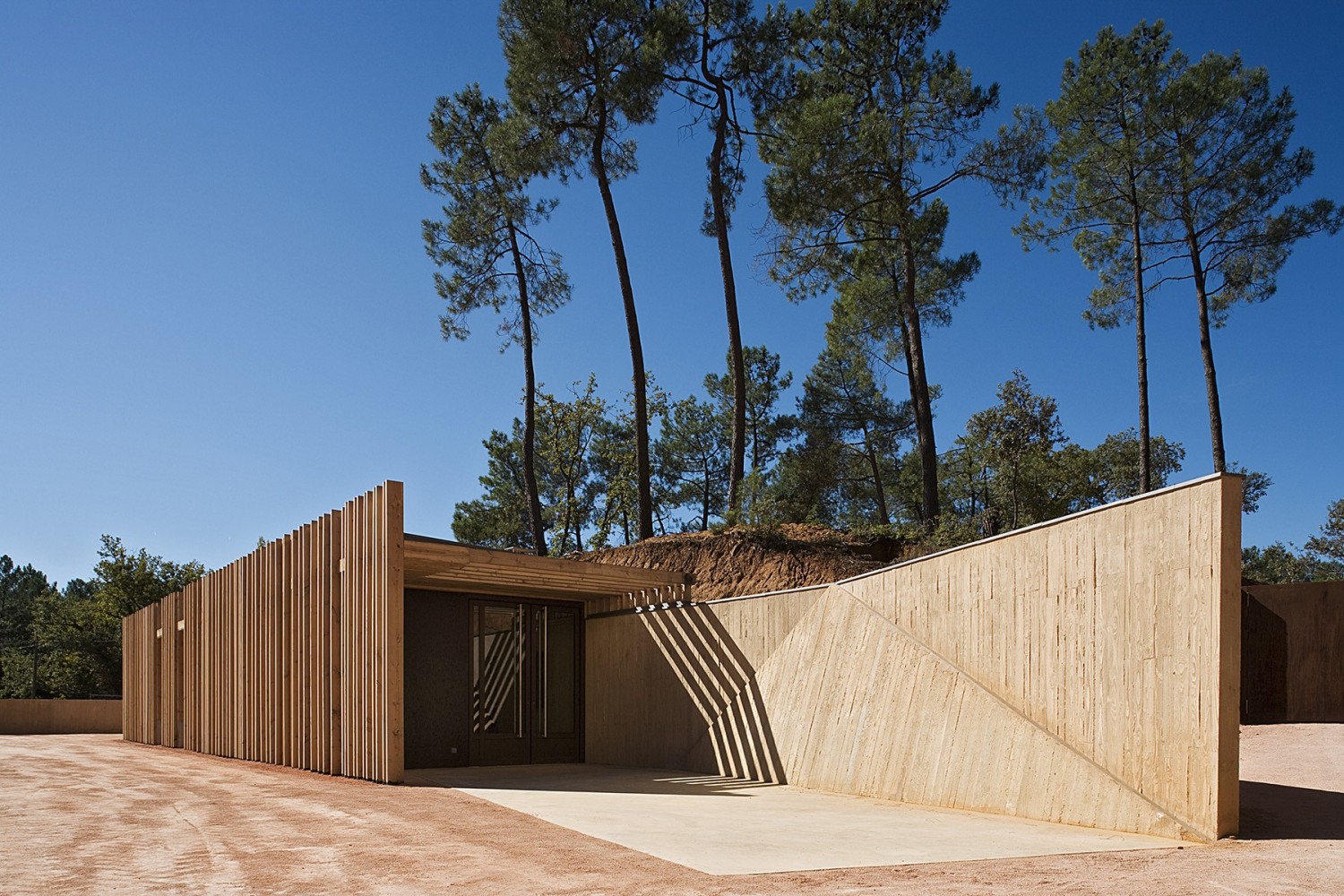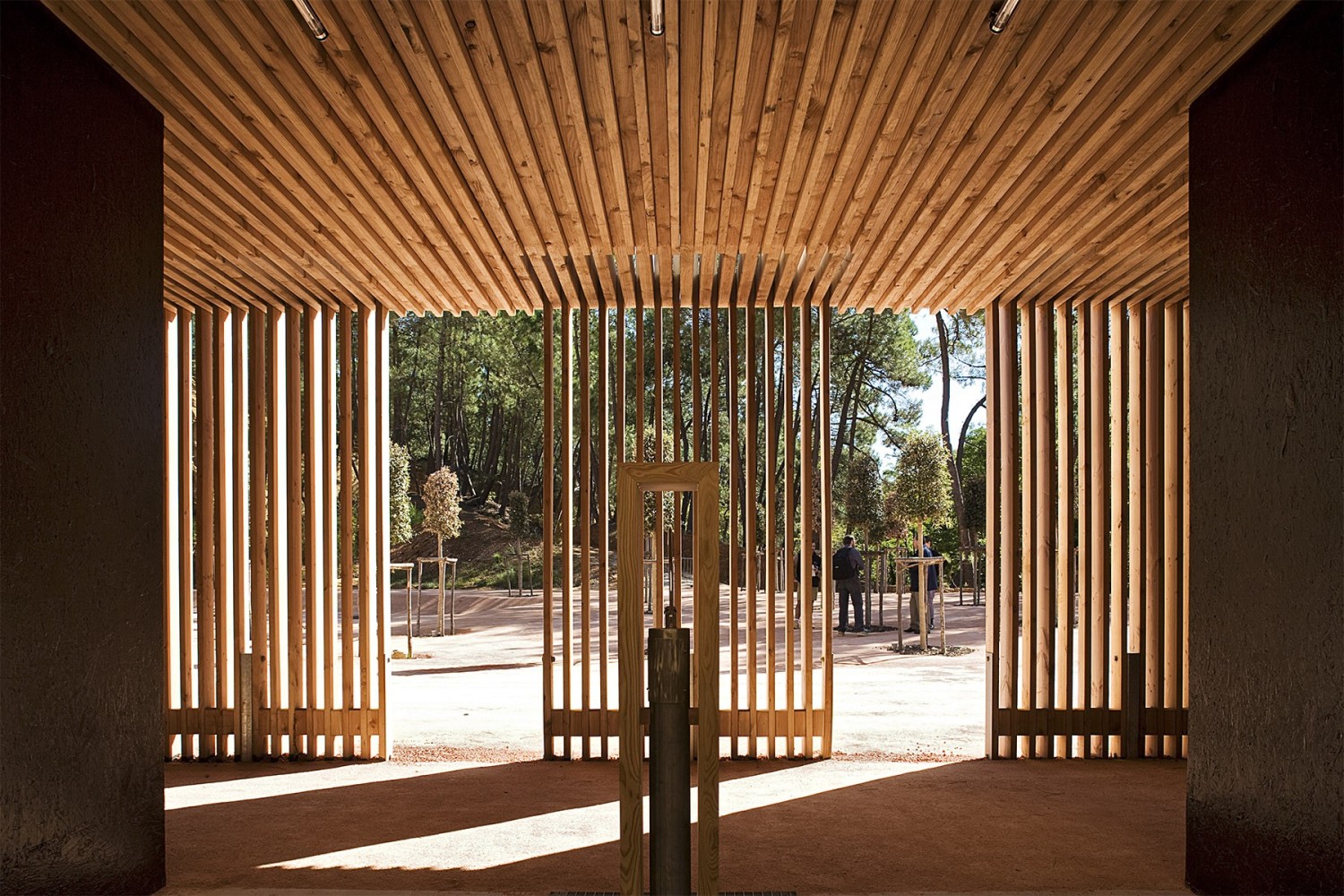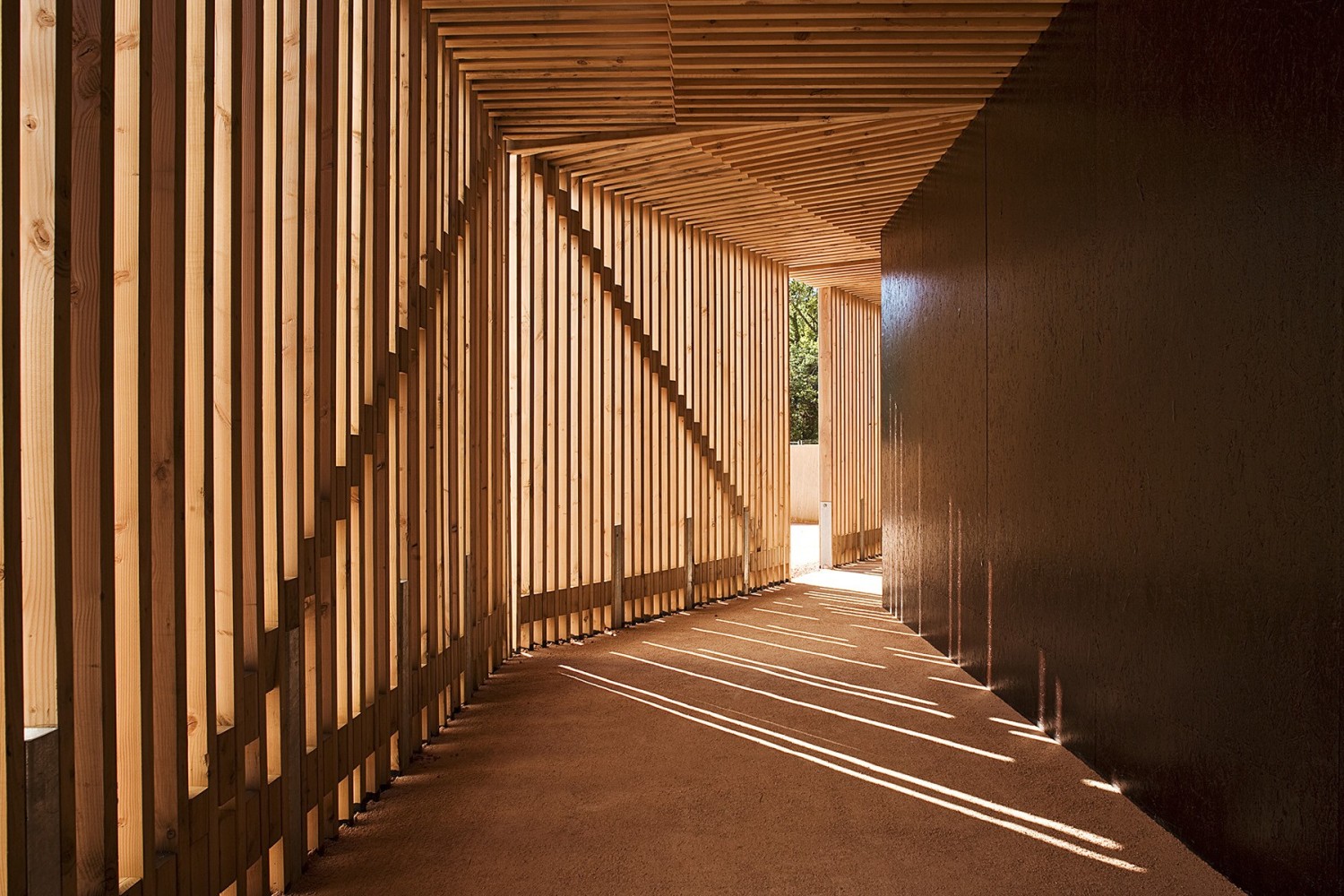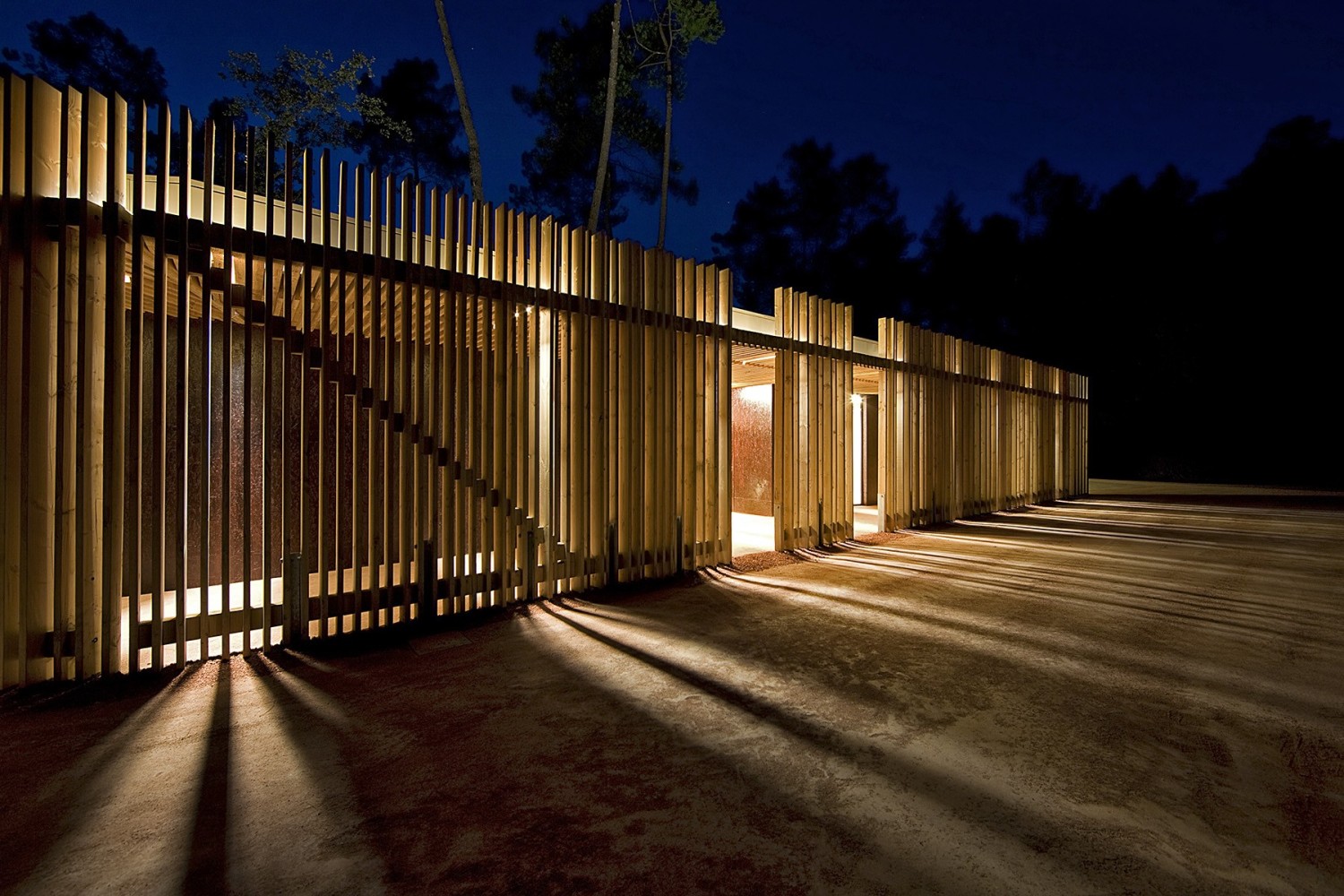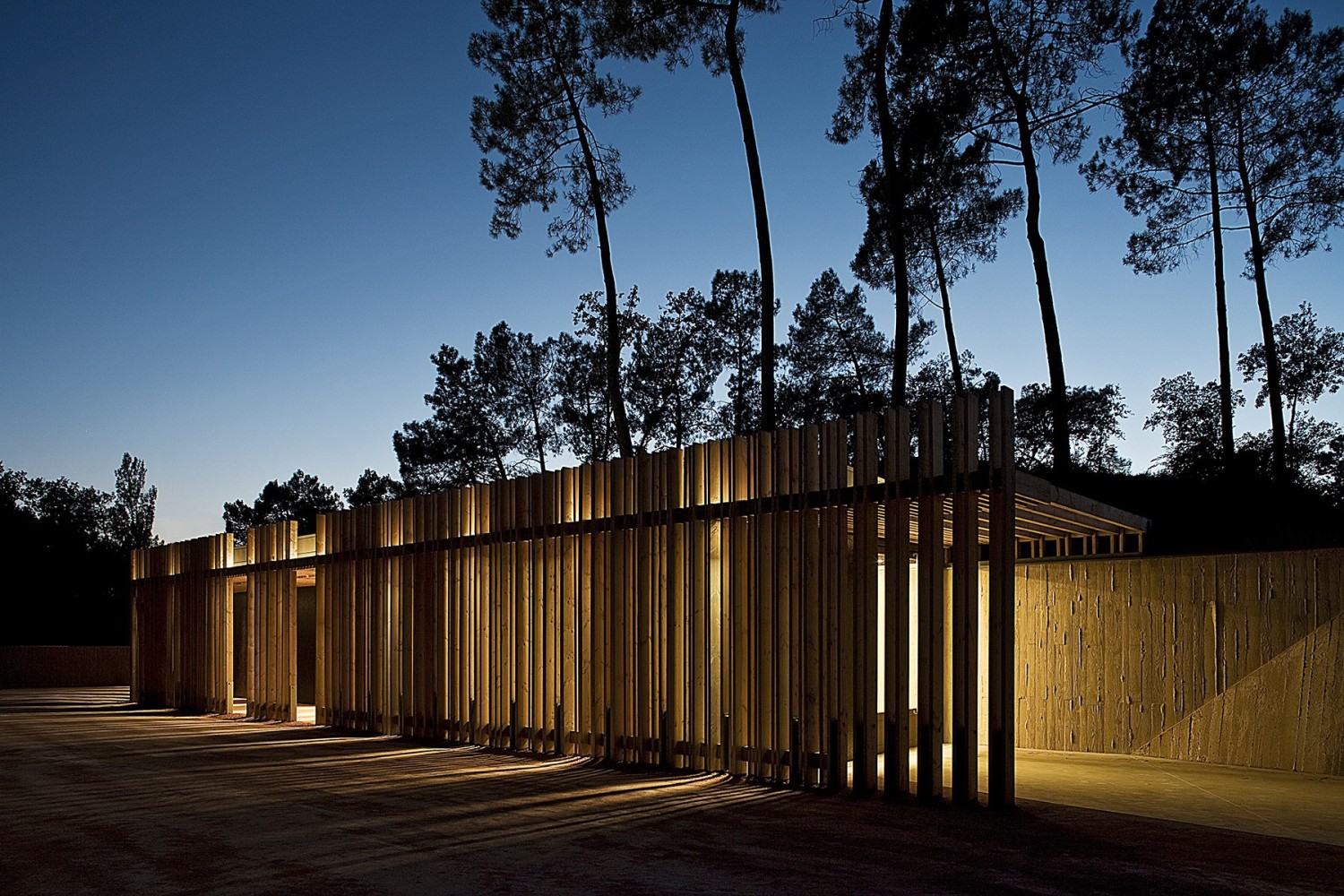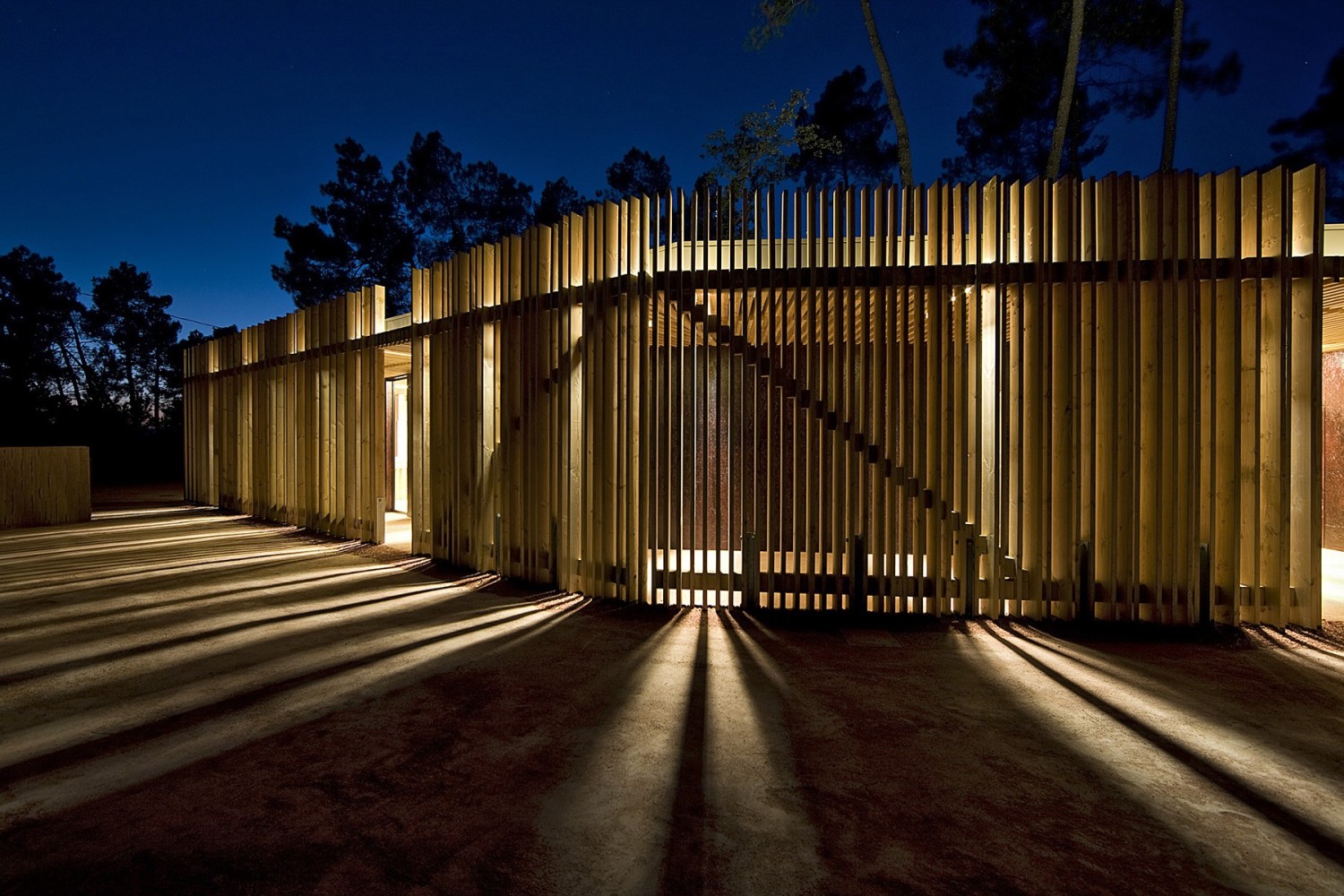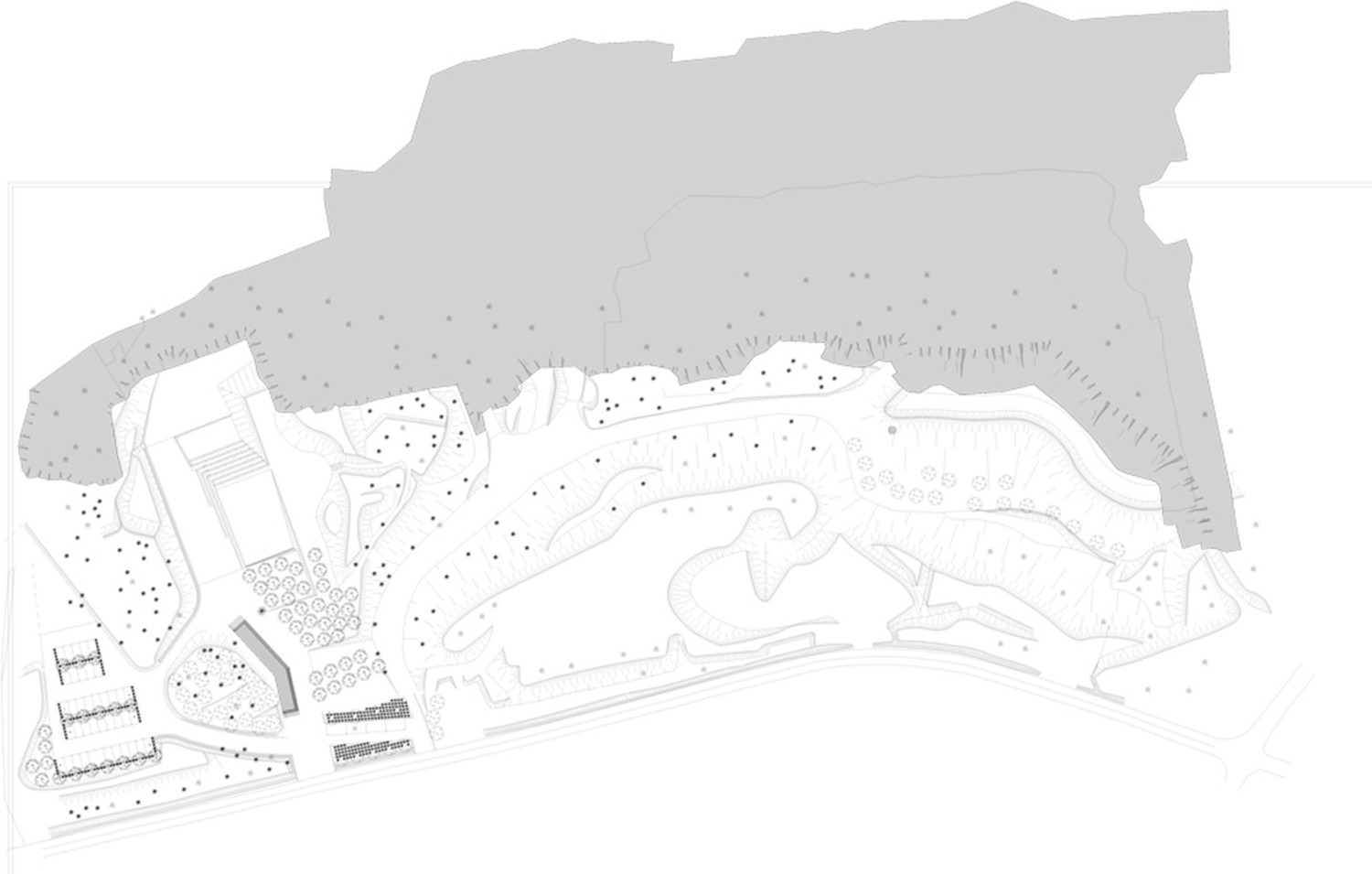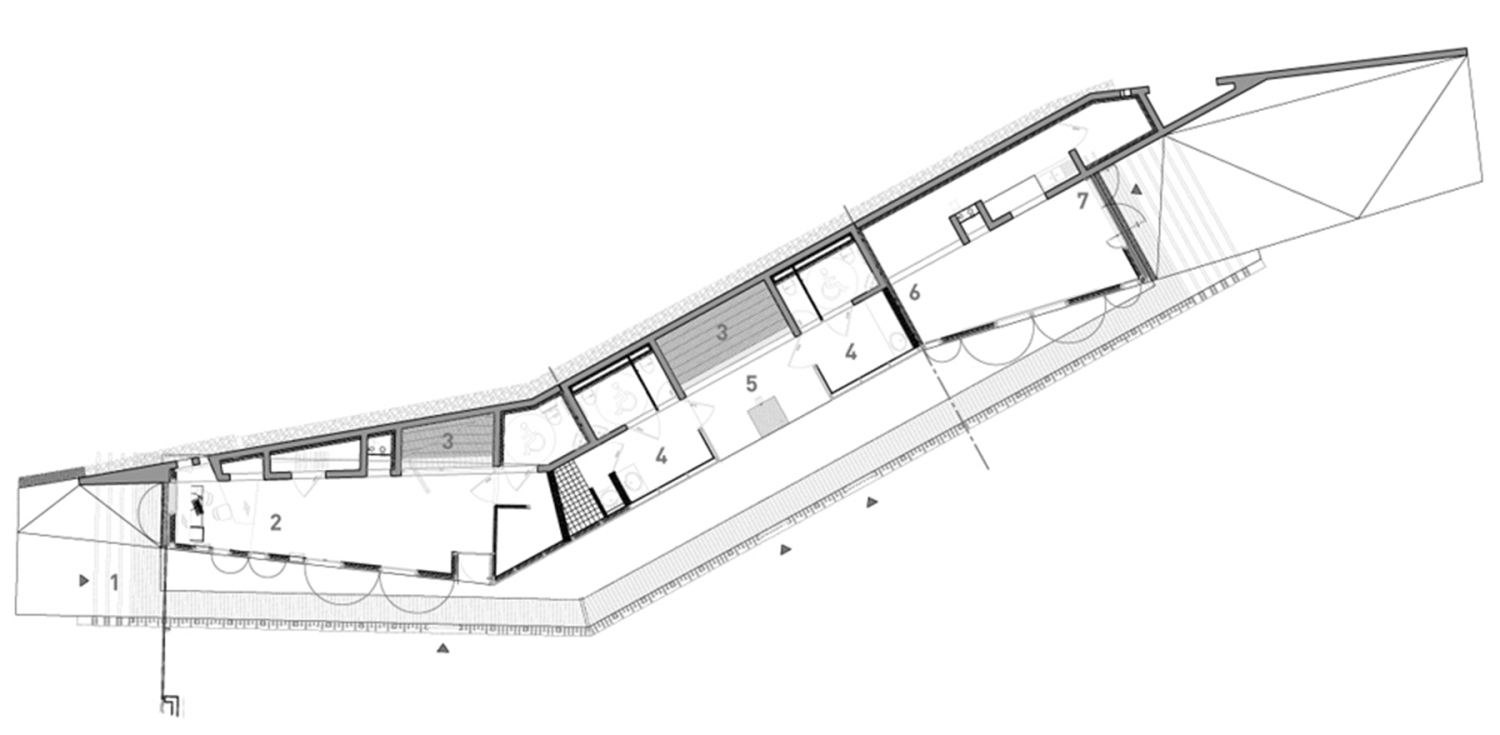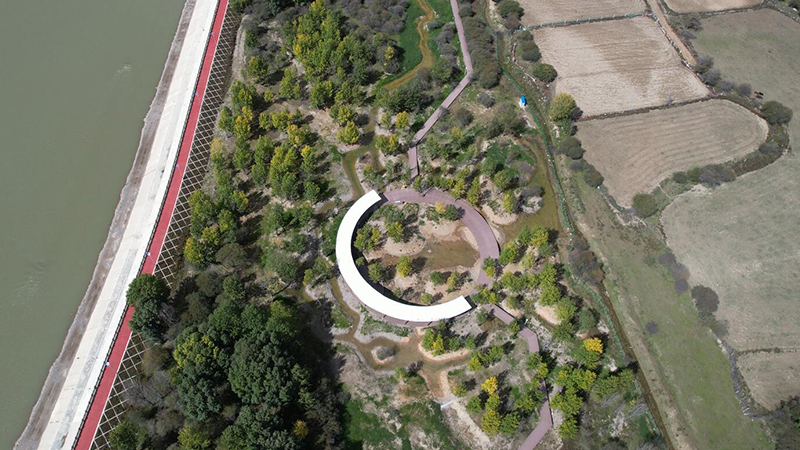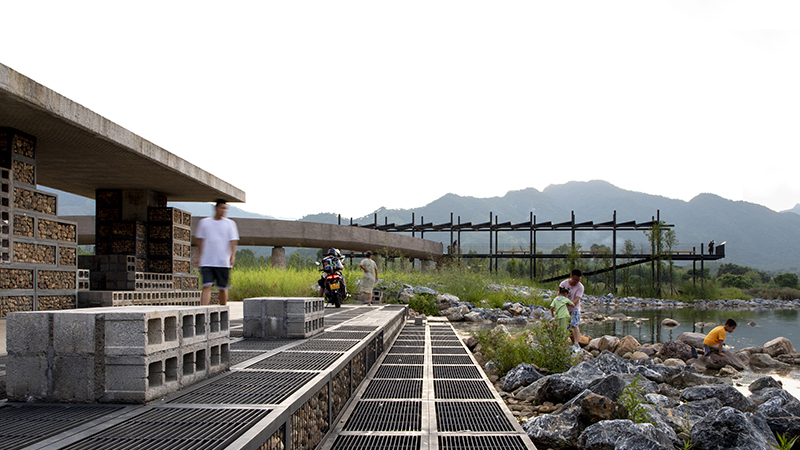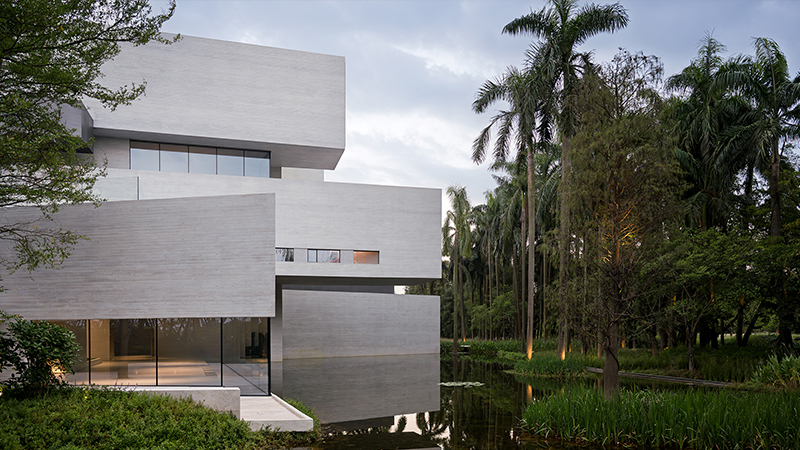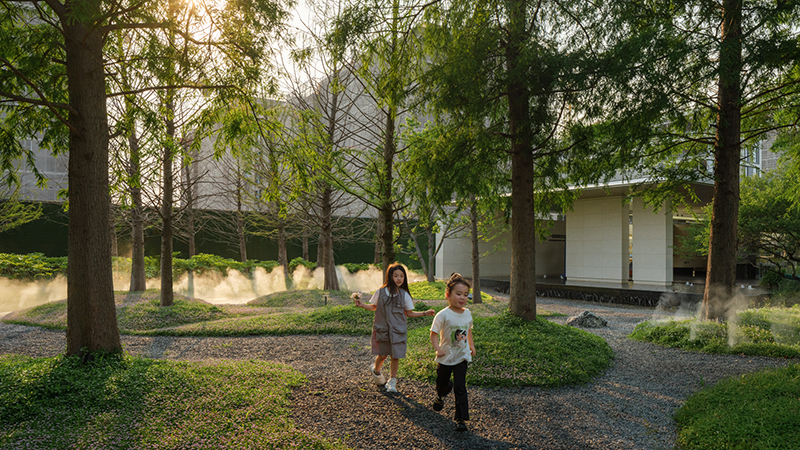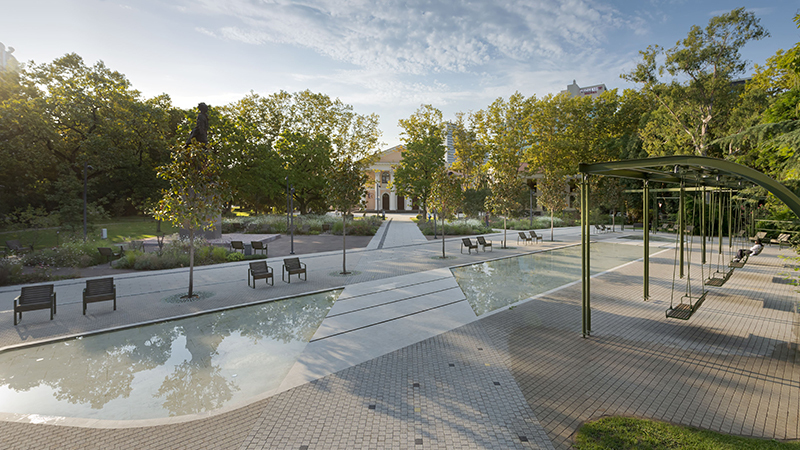场地、景观与时间
Gargas(普罗旺斯语中的 "山")市位于法国南部,是Bruoux遗址的所在地,De-So和Christine Dalnoky建筑事务所的建筑和景观项目就建在这里。
A SITE, A LANDSCAPE AND A TIME CAPSULE:
The city of Gargas (“mountain” in Provençal) is located in southern France and is home to the site of Bruoux where the architecture firm De-So and Christine Dalnoky’s architectural and landscaping project was built.
把赭石矿床发展成为有组织的旅游项目,包括艺术节的露天剧场
该地主要由一种天然矿物组成:赭石、纯粘土(高岭土)与铁质岩石(氢氧化铁)相结合,从史前起就被用来做着色颜料。这些岩石使该地区成为独一无二的“普罗旺斯科罗拉多”,被联合国教科文组织列为“生物圈保护区”。这里也有一些稀有植物的生物群落。
Development of ochre mines into an organized tour including an open air amphitheater for art festivals
The site is predominantly made up of a natural mineral: ochre, pure clay (kaolinite) combined with ferric rock (iron hydroxide) and used as a coloring pigment since prehistory. The rock makes this region a unique “Provençal Colorado” recognized as a biosphere reserve by UNESCO. It also has a biotope area for rare plants.
这是一处不同寻常的地方,场地上独特的色彩来自于岩石的颜色,即黄色(针铁矿)、褐色(褐铁矿)和红色(赤铁矿),以及19世纪由采矿者创造的美丽力量,如果追寻远古历史,发掘当地祖先的过去,这片土地还孕育出了史前时期的赭石壁画。项目2009年1月交付使用,其基础建在一块浸染了不同历史时期的土地上,形成了不同的历史时期。
It is an unusual location whose unique brightness is due to the colors of the rocks - yellow (goethite), brown (limonite) and red (hematite) - as well as the esthetic power generated by the work of 19th century miners. Looking further back in history, an ancestral past is unearthed, including prehistoric ochre murals. The bedrock of the architectural and landscaping project delivered in January 2009 was built on a plot of land steeped in and shaped by the different historic eras.
任何刻意的想法都不会影响场地设计造型和形象,设计师们追溯到过去的采矿活动、开采需求以及该地区复杂而丰富的地理和气候条件,并把这种原始、荒凉和永恒的外观精心保留下来,以示对过去和自然的敬意。
The making, shaping and image of the location were not dictated by any intention. It traces back to a mining past and the requirements of exploitation as well as the region’s complex and rich geography and climate. This raw, wild and perennial look was painstakingly preserved by the combined intentions of the architect and landscapist as a tribute to the Past and Nature.
划分自然与植被
在自然景观中选择正确的场地布置方式是项目成功的重要因素之一,其重点在于自然场地与采矿的关系。该矿洞是展览馆的天然标志,于19世纪为国际开发而挖掘。
STAGING NATURE AND VEGETATION
Choosing the right way to stage the site in its natural landscape is one of the important features behind the project’s success, whose focus was the relationship between the natural site and mining. The mine is a multi-cavity (galleries) imprint in nature. The cliff was hollowed out in the 19th century for international exploitation.
建设过程中要尊重场地自然地形和生态系统。开展景观工程,充分利用赭石景观现有资源。这片土地以荒芜的沙地为特色,不利于形成茂密的自然环境。要更新森林生态系统,并在徒步旅行的某些战略地点进行遮挡,就必须移除部分树木并种植新树。
As the construction proceeded, it was essential to respect the natural topography of the site as well as its ecosystem. The landscaping work that was performed leveraged the existing resources of the ochre landscape. The distinctive characteristic of the ground is that it is a barren and sandy ground unfavorable to lush nature. In order to enable the forest ecosystem to regenerate and shade certain strategic spots of the walking tour, it was necessary to move a few trees and plant new ones.
木材作为天然材料和建筑的过滤层
接待室被设计成一个顶棚的庭院。它位于一条有顶棚的木网走廊下面,设有前台、售票处、商店、洗手间和咖啡厅,咖啡厅有一个平台可以俯瞰赭石峭壁的全景。另外,由于矿区气温较低,酒吧也有一间可供游客热饮储藏室。
WOOD AS NATURAL MATERIAL AND FILTERING SKIN OF THE BUILDING
The reception building was designed as a covered courtyard. It houses under a wooden mesh with a single covered gallery: the front desk, ticket booth, shop, restrooms and the cafeteria which has a terrace giving a panoramic view of the ochre cliffs. Also, the bar has a storeroom for preparing hot drinks after visiting the mines where temperatures are quite low.
木制院落,通过透明过滤墙(木制和玻璃的内部立面),向户外开放,坐落在徒步旅行的终点,为温暖的日出和南方提供遮荫。这座建筑的拱形腹部为落地地板,没有吊顶,可以在路上看到。
The wooden courtyard, through the transparency of its filter wall (wooden and glass interior façades), opens out onto the clearing located at the end of the walking tour and the shade garden protecting against the warming sunrise and the south. The soffit of the building is nail-down flooring, without suspended ceiling and visible from the road.
环境友好型建筑
山腰上建造的赭石浅色混凝土挡土墙,构成了一个由外露天井组成的“舒适”层。这种天井为建筑内部提供了自然的间接采光。建筑物屋顶的植物可以:
1.建筑与自然环境的协调配合与融合;
2.通过提供气候设施区使整个系统具有良好的比热容;
3.提供简单的通风(卫生间是水密而非气密,无需维护和使用);
4.利用植物屋顶的废水,并将径流送回场地。
AN ENVIRONMENT-FRIENDLY BUILDING
An ochre light-colored concrete retaining wall built on the hillside makes up an “amenity-based” layer comprising the exterior patios. Those patios give a natural indirect light inside the building. The building has a vegetated roof to:
1. Achieve a harmonious match and integration of the construction in the natural environment.
2. Obtain superior thermal inertia of the overall system by providing a climatic amenity area.
3. Ventilate the building simply and manually (the restrooms are water-tight but not air-tight and do not require maintenance and use).
4. Use waste water from the vegetated roof and return the runoffs to the site.
▼项目平面图 Plan
▼项目接待中心平面图 Visitor Center Plan
项目名称:Mines de Bruoux
设计单位:DE-SO
网址:www.de-so.com
项目地点:法国南部 Gargas Vaucluse South
竣工年份:2012
建筑面积:350m²
照片来源:Hervé Abbadie
Project name: Mines de Bruoux
Company name: DE-SO
Website:www.de-so.com
Project location: Gargas Vaucluse South of France
Completion Year: 2012
Building area (m²): 350 m²
Photo credits:Hervé Abbadie
更新日期:2020-07-09 17:08:00
非常感谢 DE-SO 带来的精彩项目, 查阅更多Appreciations towards DE-SO for sharing wonderful work on hhlloo. Click to see more works!



